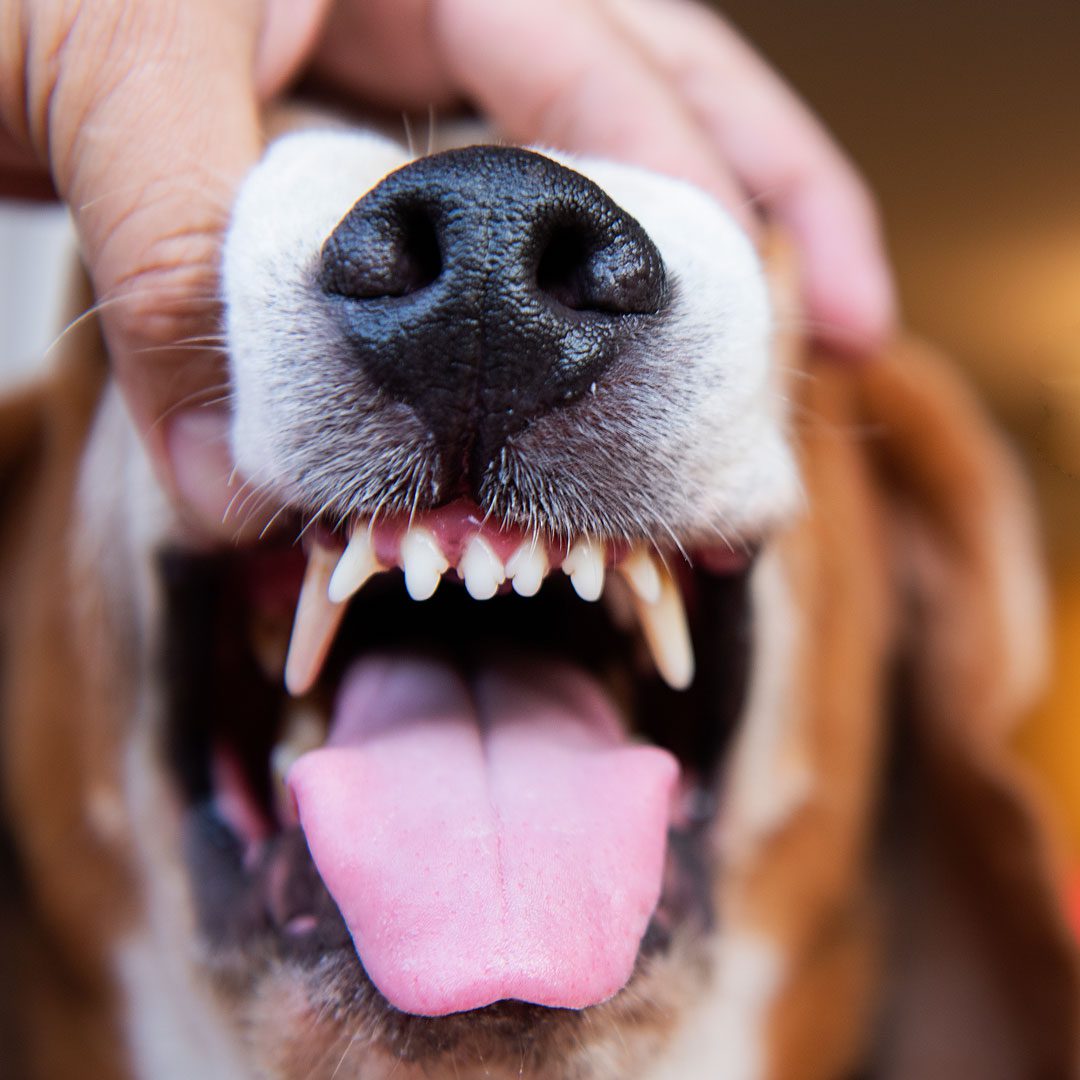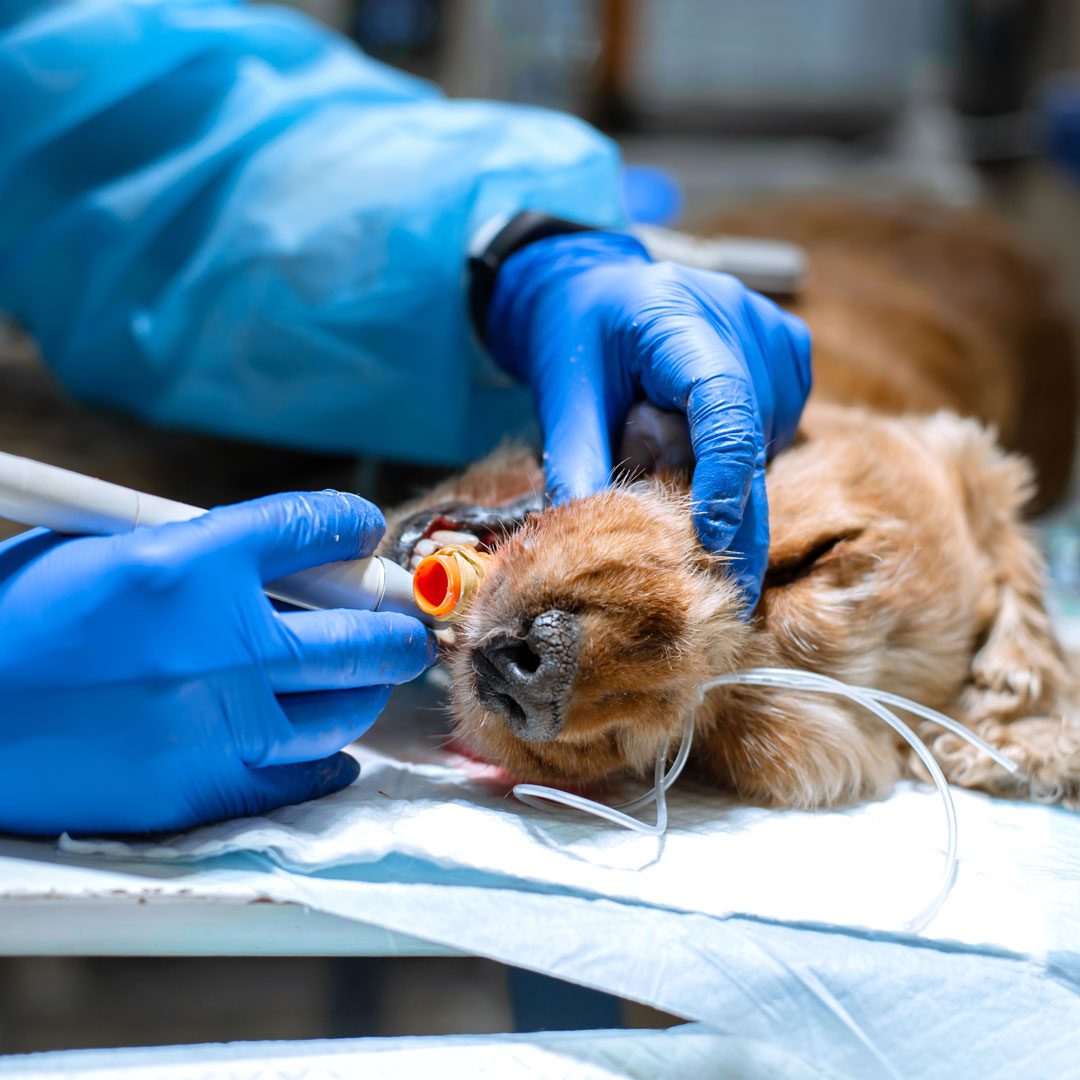
Spot the Signs: Does Your Pet Have Dental Disease?
Dental disease often sneaks up on pet parents. Since cats and dogs instinctively hide pain, their discomfort can go unnoticed until the problem is advanced. By the time obvious symptoms appear, dental disease is already affecting their quality of life. If left untreated, periodontal disease doesn’t just cause pain—it can impact your pet’s entire body. Bacteria from the mouth can enter the bloodstream, leading to heart, kidney, and liver disease.
Signs your pet may have dental disease include:
- Bad breath
- Red, swollen, or bleeding gums
- Tartar buildup
- Loose or missing teeth
- Excessive drooling
- Pawing at the mouth
- Difficulty eating or chewing
- Changes in behavior

Safe Anesthesia & Fear Free Handling
We know the thought of anesthesia is worrisome to many pet owners, but, when evaluating the pros and cons of anesthesia-free dentistry, the drawbacks far outweigh any benefits. Not only does an anesthesia-free “cleaning” provide a cosmetic cleaning at best, it’s also exceptionally stressful for pets to have their heads restrained, mouths manipulated, and gums poked and prodded.
Since pets won’t sit still for a deep cleaning or X-rays—and we can’t even imagine coming close to sensitive gums with sharp scalers and pointy probes!—all dental procedures are performed under general anesthesia for their comfort and safety. Our experienced team closely monitors your pet’s vitals throughout the entire process, ensuring they receive gentle, stress-free care from start to finish.

